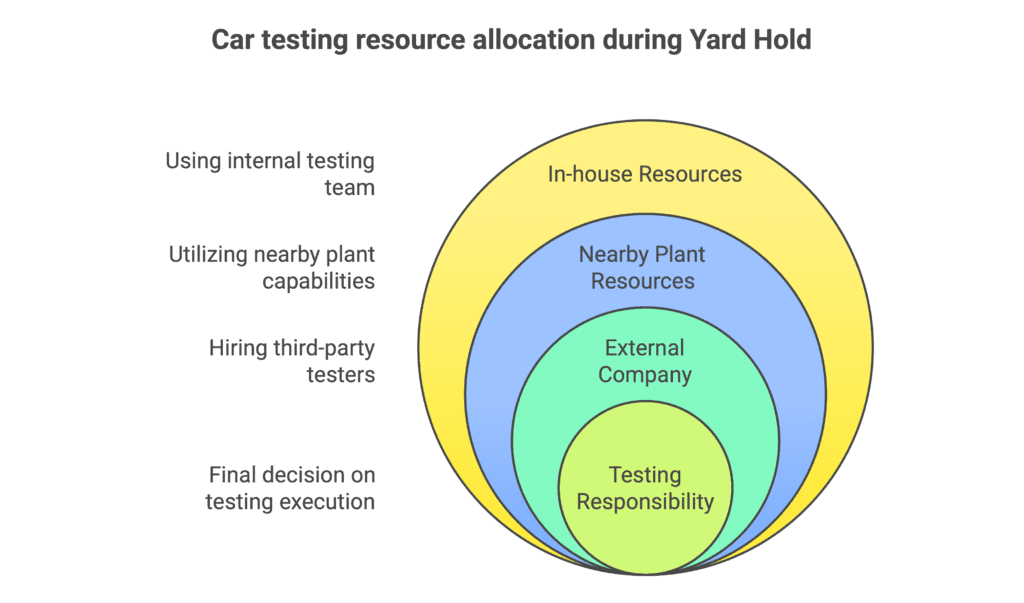Yard Hold is one of the escalation tools used by some customers in the automotive industry. It can pose many problems in terms of cost, loss of customer satisfaction, and reputation. For this reason, it is worth knowing how to manage it.
Introduction
As the name suggests, this escalation is related to the fact that the customer blocks all vehicles on the shipping yard until certain activities are carried out by the supplier.
This is a very critical moment, as the lack of a proper response plan can result in a serious financial burden. This is due to the fact that a full shipping yard dramatically limits or even stops the manufacturer from producing cars.
So when can Yard Hold be triggered?
Yard Hold initiation conditions
Each of the clients, as part of the “control gates”, performs a Final Product Audit. Unlike the same activity that is performed by suppliers, our client tests the car.
It is this activity, and precisely its negative result, that is one of the main conditions for Yard Hold initiation. We must be aware that as part of such an audit, the client performs a static assessment with verification of specific functions, e.g.:
- checking the operation of the lights
- verification of the correct operation of the window lifts
- measurement of the gaps between the bumpers and the car body
The second stage is the road test. During the audit, the person performing the Final Product Audit checks whether there are any problems with:
- vehicle driving
- braking distance
- the appearance of certain signals on the display indicating a problem with the proper functioning of the system
If a problem with a potential safety impact is observed during such a test, the Yard Hold procedure may be initiated.
Another common scenario is the initiation of Yard Hold after feedback made while moving a car during the standard manufacturing process. During car building, starting from the assembly department, the car is transferred several times in order to perform certain operations, checks, or adjustments.
Time – An important piece of the puzzle
In a situation where we are informed that all cars have been stopped at the shipping yard, we must be aware that time is not our ally.
For sure, the client will ask us for a few things, among which will be:
Performing analysis as soon as possible
A small note here: in a world of globalization, many customer locations are on other continents. Of course, this affects the time of receiving a given component for analysis. If possible, it is worth using the resources of our organization from a plant located in such a location.
Most often, the client’s representative will participate in the analysis.
Defining and implementing a procedure for checking blocked vehicles
Defining and validating is only part of the stage. Now the organization must define who will physically test the locked cars. Here we have three options:
- We carry it out with our own resources.
- We carry it out with the resources of our organization from a plant located close to the OEM plant.
- Finally, we hire an external company or resident if our plant assigns them to provide support.

What else is worth knowing about Yard Hold
Most often, along with the launch, we will also receive a properly defined complaint. We must remember this because it affects our final rating in the client’s bid list (scorecard). It may happen that these two factors will make us “red” in the final assessment. Thus, we will not be able to participate in the quotation for new projects.
Yard Hold is not a special status. We do not have to inform the Certification Body of this fact.
Finally, it is used, among others, in cooperation with Stellantis ex-FCA and ex-PSA.
Dariusz Kowalczyk


